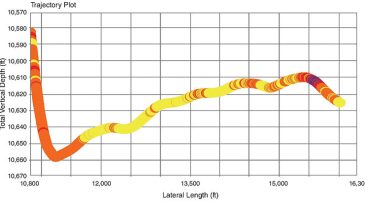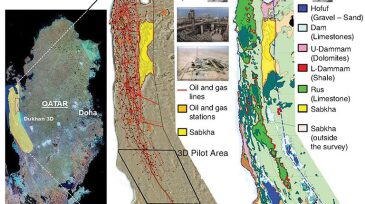Reservoir characterization
This paper presents a novel methodology for assessing the rapid mineral carbonation of carbon dioxide through geochemical interactions with carbon-, magnesium-, and iron-rich minerals abundant in geological formations.
This paper introduces a machine-learning approach that integrates well-logging data to enhance depth selection, thereby increasing the likelihood of obtaining accurate and valuable formation-pressure results.
This study aims to use machine-learning techniques to predict well logs by analyzing mud-log and logging-while-drilling data.
-
The force required to drill through a rock is a direct test of its strength and stiffness. Developing a reliable measure of the properties of rock based on the force required to drill a long lateral is a large challenge.
-
One of the biggest ways to lower the cost of production from shale would be to identify zones that are productive, or not, before fracturing them.
-
Understanding how much rock is being stimulated and propped is critical for unconventional producers. New imaging methods using electromagnetic energy or acoustic microemitters could represent a milestone in understanding what is left behind after fracturing.
-
The world’s first reflection seismic field tests were conducted near Oklahoma City in 1921, and, ever since then, the industry has endeavored to improve that seismic imaging process.
-
Acquiring new 3D broadband seismic data of a gas field containing legacy 3D conventional towed-streamer seismic data.
-
Integration of microgravity, resistivity, and seismic data improves the fidelity of seismic images and the depth match.
-
The integration of microseismic data with 3D seismic attributes, and well log and completions data is used to understand geomechanical rock properties.
-
The Pugang gas field, one of the biggest inland gas discoveries of the last decade in China, has hydrogen sulfide (H2S) concentrations as high as 10%, making surface- and downhole-facilities design and execution challenging.
-
Over the past year, despite the naysayers’ comments and predictions, the usual creativity and ingenuity of engineers and scientists in the oil industry were ubiquitous.
-
This work presents a real field example in which the integration of well-testing and geological interpretations increased the understanding of a complex, heterogeneous reservoir.













